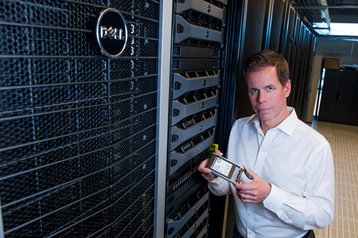Dell has added support for larger 3.8TB solid state drives across its entire storage portfolio.
It has become the first vendor to adopt flash made by Samsung and featuring the Triple Level Cell (TLC) 3D NAND technology, which makes SSDs more cost-effective to produce, resulting in cheaper hybrid and all-flash storage arrays.
Paul Harrison, storage director for Dell UK, told DatacenterDynamics the new drives can match the ‘price per GB’ of traditional 15k hard drives before compression and deduplication, while having much better performance characteristics.
The new type of NAND chips also enables IT staff to create multiple tiers of flash storage that serve different use cases, depending on whether they were built with SLC, MLC or TLC memory.
“Cost has been the single biggest stumbling block to flash adoption in the data center, and Dell’s announcement of a new lower dollar per gigabyte price point for all-flash configurations enables the use of flash technology across an even greater variety of enterprise workloads, ” commented Eric Burgener, research director for storage systems at IDC.
Unseating the disk
3D NAND is a type of flash memory that stacks memory cells on top of each other, allowing for more transistor gates in the same piece of silicon. The technology does not make flash more durable, but it does make it cheap. So cheap, in fact, that Dell claims it now offers the cheapest flash in the industry.
Meanwhile higher density helps the SC Series arrays squeeze up to 90 terabytes of raw flash capacity into a 2U box.
For example, Dell now can offer SC4020 all-flash solutions for as low as US$1.66 per GB ‘street price’ and as low as 58 cents per GB in typical hybrid flash configurations.
The nature of 3D NAND means t is more suitable for read-intensive tasks, and can be combined with write-intensive SLC flash to fit different workloads.
“As the first array vendor to announce support for this latest flash technology, Dell continues to redefine the economics of enterprise storage and tear down cost barriers to flash adoption,” said Alan Atkinson, vice president and general manager for Dell Storage. “With these advancements, we can substantially reduce the cost of high-performing, flash-optimized arrays while also cranking up the performance of affordable, general purpose arrays.”
Dell is not the first to announce support for huge SSDs in a 3.5-inch form-factor: in June, HP also increased the size of its largest flash drives to 3.8TB – although these drives are still made using cMLC flash, and are inherently more expensive.

